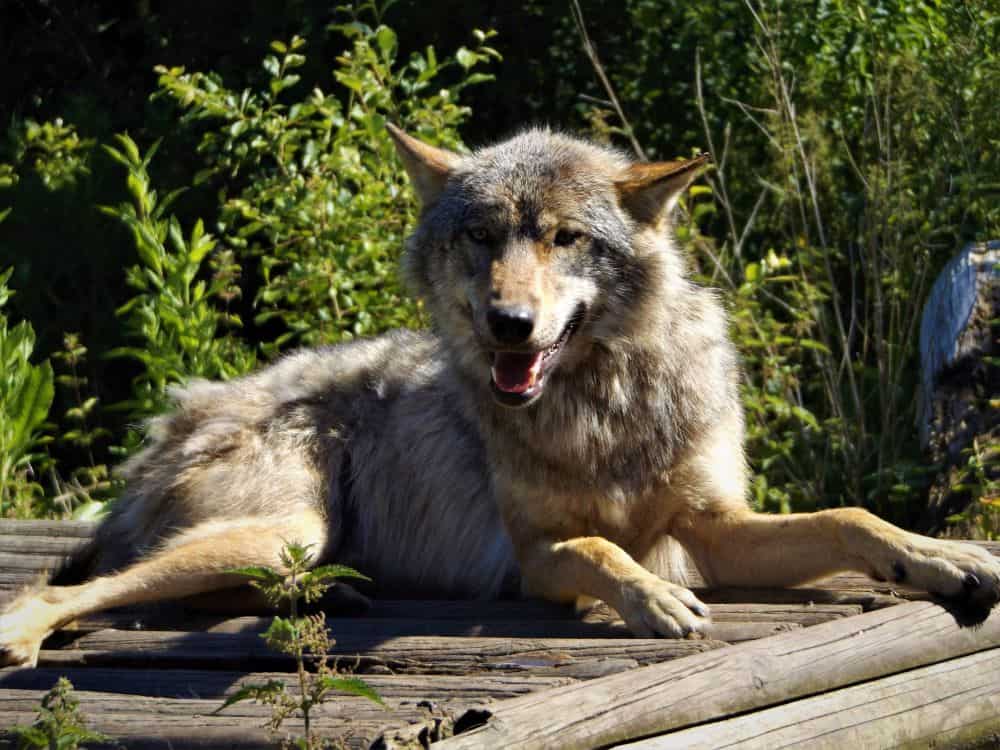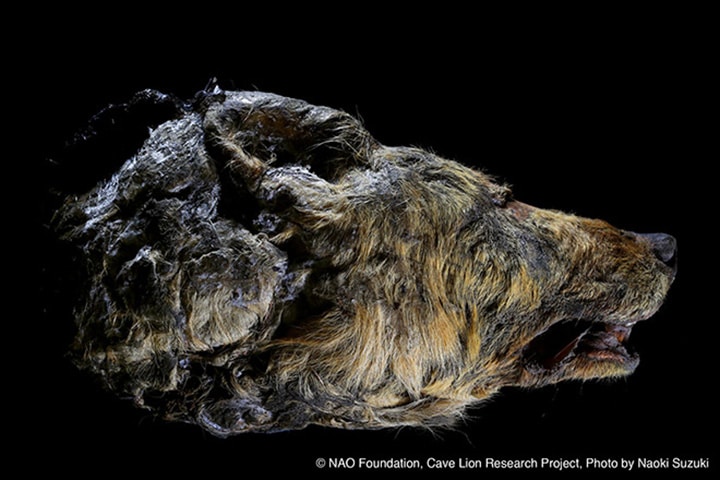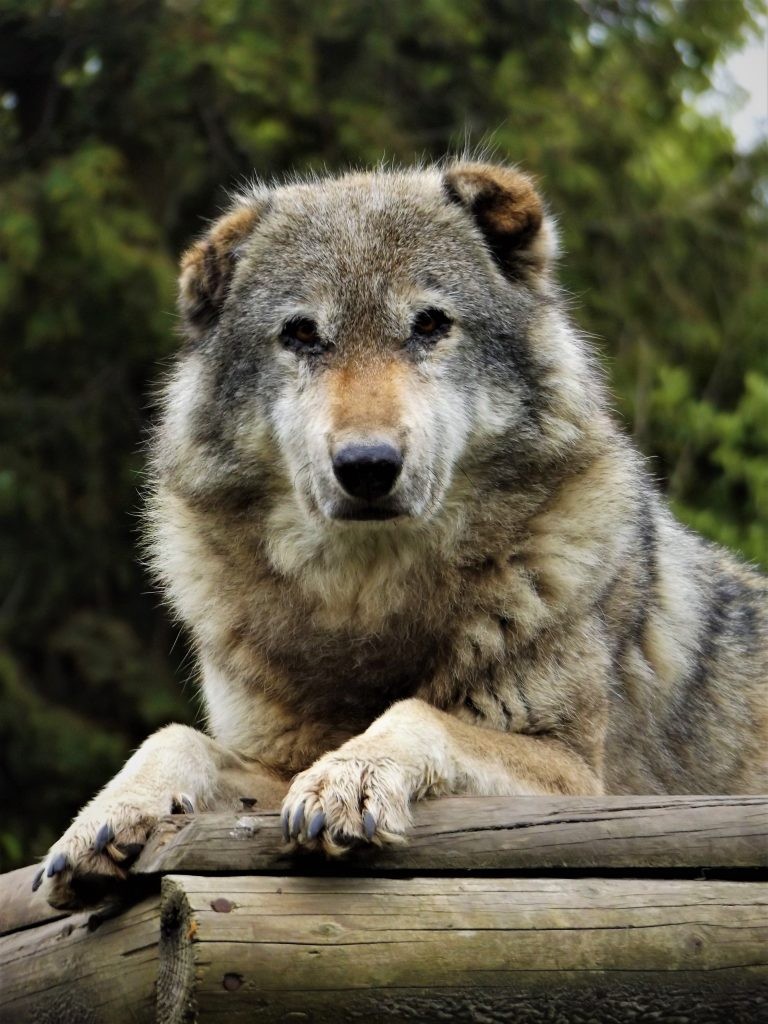The last few weeks, whether you are a fan or not, it seems no one could escape Game of Thrones. I for one am a fan, but I wanted to wait until the dust had settled following the finale, before writing about this and the timing could not have worked out more perfectly in hindsight.
Just this weekend (7th June to be more precise), an article was released by the Siberian Times about a recent find; a perfectly preserved head of a Pleistocene wolf has been unearthed and is dated to roughly 40,000 years old! The specimen is still being examined by scientists to determine the true age, potential cause of death and evolutionary relationships with current species, but I thought this was the perfect time to write about those mythical creatures we have come to know and love from Game of Thrones; Dire wolves.
They Existed!!!
Way back in Season 1 of HBO’s Game of Thrones, we were introduced to six adorable dire wolf puppies. Throughout the series, it alluded to the fact that dire wolves are special, even magical perhaps, much like the dragons that also appeared on the show. But, what if I was to tell you dire wolves are not just mythical creatures developed for a TV show, that they existed, and were in fact one of the top predators in prehistoric America?
Dire wolf (Canis dirus) remains have been found dating as far back as 125,000 years ago and as recently as 9,500 years ago. This puts them on the earth at the time known as the Ice Age (Pleistocene/Holocene). The world was a very different place back then, ice and arctic tundra dominated the landscape in the Northern Hemisphere. With regards to carnivores, the dire wolf has become one of the most famous to be associated with the time period (the other being sabre-toothed cats/ Smilodon) and preyed upon the mega herbivores of this time (such as mammoths, giant ground sloths and bison).
Canis dirus was the largest species of Canid to ever exist; they stood at least a metre tall (some populations would’ve had considerably larger individuals) and weighed anywhere between 68kg-110kg. When taking into account body mass, analysis of dire wolf skulls has shown that with a bite force quota of 163 BFQ (jaguars have a 137 BFQ), they have the strongest bite of any placental mammal. They are all pretty impressive stats which show that the dire wolf rightfully earned its latin name which means “fearsome dog”. It was quite clearly a formidable predator, living and hunting in large packs like its relatives do today.
However, as fearsome as it was, the dire wolf unfortunately died out around 10,000 years ago. This period in history coincides with the American megafaunal extinction event; the extinction of most mammals weighing over 44kg. For top carnivores like the dire wolves and Smilodon, the disappearance of their prey meant disaster. Climate change has been attributed as the main cause of this catastrophic ‘dying-out’, however, a contributing factor that cannot be overlooked is the arrival of humans. The added pressures of over exploitation and further habitat loss with our arrival unfortunately pushed the majority of these large, north American mammals, (including dire wolves) to extinction.
The grey wolf (Canis lupus) is the largest present-day living member of the Canine family. There are a total of 38 subspecies of grey wolf although this number is constantly changing with genetic analyses. There are two main geographical groupings; European and North American.
Our Wolves
At Wingham Wildlife Park, we have three European grey wolves; Dakota (the dominant female), Aria (Dakota’s low-ranking sister) and Mowgli (two-year-old male, son of Dakota). At ten years old, Dakota is currently the oldest grey wolf in captivity in the UK (wildlife spans on average are between 6-8 years), although we think she doesn’t look a day over seven!

Grey wolves, like most canids are social animals. They live in family groups called ‘packs’ normally comprising of a male and female pair and their relatives (be that offspring or siblings). Pack size can vary greatly, but doesn’t seem to exceed 11 individuals, and youngsters have sometimes left their packs as young as 10 months old in order to start one of their own. When Dakota gave birth to Mowgli two years ago, he also had three sisters in the litter with him, who have since left to start their own pack at Colchester zoo.
When people come to the wolf talk at Wingham, they are often very surprised by how nervous Dakota, Aria and Mowgli all are. This is quite normal for wolves, they are shy, secretive animals; not the blood thirsty monsters too often portrayed in the media. Throughout history wolves have gotten a pretty bad deal when it comes to attitudes towards them. In folklore and religion, they are often portrayed as villains or bad omens. Couple this with historical conflict with humans (through livestock predation, habitat loss and trophy hunting), its not hard to see how they have declined in every geographic area that they exist.
The active and widespread extermination of wolves in Europe started in the middle ages and continued until as recently as the late 1800s. In England, their persecution was actually the law, with the last one hunted in the sixteenth century. In Scotland, they lasted a little longer in the vast forests of the highlands until around 1684. Then in Ireland, the last wolf was believed to have been killed in 1786. Currently, the grey wolf is still regionally extinct in 8 European countries; Austria, Belgium, Denmark, Republic of Ireland, Luxembourg, Netherlands, Switzerland and the UK.
But, people’s attitudes are starting to shift. Wolves play a vital role in the habitats and areas that they live in (a “keystone species”). Once removed, the ecosystem is dramatically changed and in some cases, struggle to function altogether. This has led to reintroductions in some areas of their historic range, as well as natural recolonization once persecution was haltered. This has become known in the conservation field as “rewilding”.
Rewilding is large scale conservation aimed at restoring and protecting areas and natural processes (which we as humans rely on such as clean water, air, and food) and or protecting and reintroducing apex predators and keystone species. In the UK, this new way of thinking about conservation has hit the ground running and the reintroduction of grey wolves into Scotland and England is being seriously considered as part of a wider effort for reintroducing native species back to the country.
Here at Wingham, our wolves act as ambassadors, showing you guys just how placid, socially complex and interesting wolves really are. I for one am very hopeful for their potential future up in the wilds of Scotland. Time will tell but in the meantime you can visit our wolves Dakota, Aria and Mowgli.






